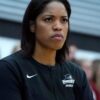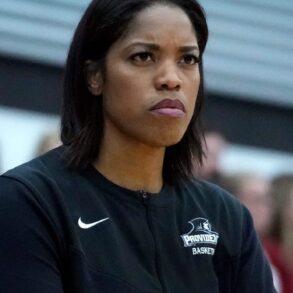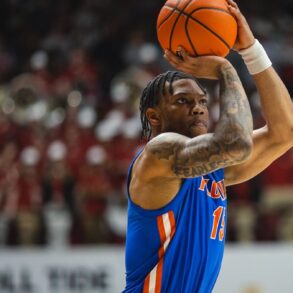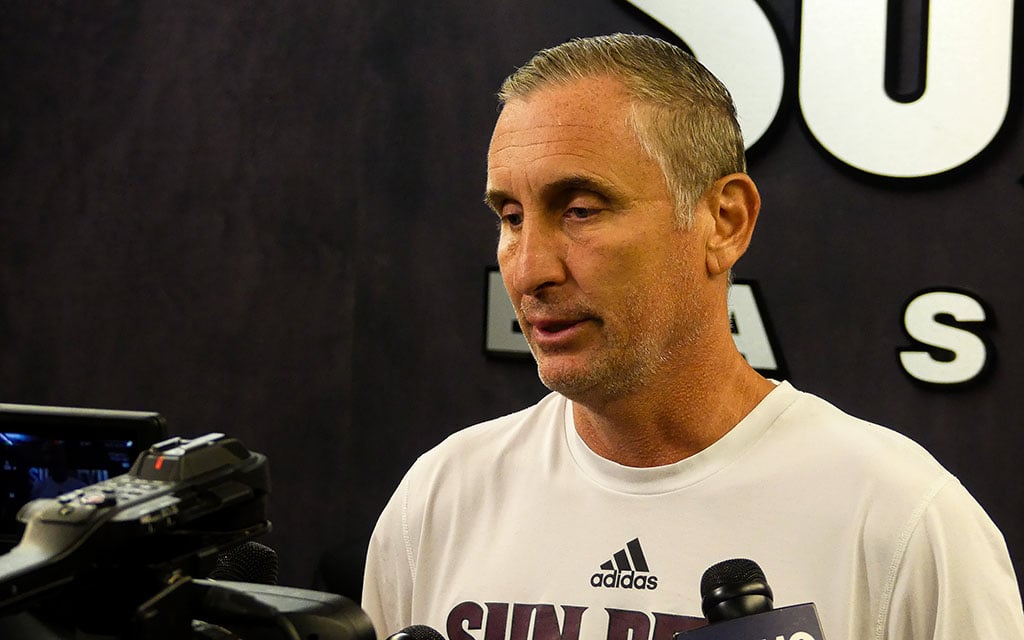
Arizona State men’s basketball coach speaks with the media following a summer workout at Tempe’s Weatherup Center on June 4, 2025. (Photo by Payne Moses/Cronkite News)
TEMPE – Amid the celebration of former ASU basketball legends Luguentz Dort and Jeff Ayres at Weatherup Center last Wednesday, Sun Devils coach Bobby Hurley mused on the state of the college basketball landscape and how it has influenced his approach to putting together a roster in the last year of his contract.
A long offseason still remains until the next iteration of the Sun Devils men’s basketball team first hits the floor at Desert Financial Arena – but it will be an important one as Hurley is expected to be shadowed by the simmering blaze cast by the proverbial hot seat all season long.
After patrolling the Sun Devils sidelines for 10 seasons with an overall record of 168-151, Hurley finds himself in a familiar position, fighting calls for him to be fired if his team again fails to make a dent in the postseason. Hurley seems used to the growing noise.
But he wasn’t always willing to acknowledge it.
Heading into the 2025-26 season after a disappointing 13-20 campaign last year in the Sun Devils’ first forway in the Big 12 Conference, Hurley is candid when he speaks to potential recruits about his situation.
“I just shifted my narrative and the vision that I was trying to portray to everybody – like, ‘My back’s against the wall,’” Hurley said. “I’ve loved my time here at Arizona State and I value that greatly. So, if you have one year and want to be with someone who’s all in and invested to win and have a great season, then (joining the team) might make sense for you.”
Hurley is still in the process of putting together a roster for next season – the roster construction process has perhaps been made longer in the wake of the most significant turnover Hurley has seen in his time at Arizona State.
Sophomore guard Trevor Best is currently the Sun Devils’ lone returning player.
Best didn’t enroll in the university until the middle of last season in January. His first game receiving significant minutes came during a Feb. 26 home loss to No. 25 BYU where he scored 18 points on 5-of-8 shooting from the floor.
Gone from last season’s roster is second-leading scorer BJ Freeman, who transferred in-conference to the University of Central Florida.
ASU’s electric guard Joson Sanon? He’s gone, too. He’ll help shore up Rick Pitinno’s backcourt at a resurgent St. John’s program next season.
Even former five-star prospect Jayden Quaintance, the youngest player in college basketball last season, has left. Quaintance will take his renowned length and defensive instincts to the Kentucky Wildcats next season, provided he recovers from a torn ACL suffered in a February game against Kansas State.
Losing significant contributors has become the way of the world in college basketball, as evidenced by an offseason that saw nearly 2,700 players enter their names into the portal when it officially closed on April 22.
Many in the college basketball world are still not keen on the freedom that the transfer portal allows, even those who were once players themselves.
Ayres, known as Jeff Pendergraph in his time at Arizona State from 2005 to 2009, ranks second on the school’s all-time career rebounding list. He sits in eighth place for career points. It was announced last Wednesday that he will be inducted into the Sun Devils Hall of Fame.
“Guys can kind of just change their mind whenever and move around,” Ayres said. “And that’s just not how life works. You’ve got to kind of find ways to survive and get through it, and it makes you stronger.”
Hurley used to get almost heartbroken when a player left, but after a couple years of the NCAA allowing players to transfer without having to sit out a year, he understands this is how things are.
“I expect there to be change every year,” Hurley said. “And now I’m just excited to get in the gym with the new guys that we have coming in and seeing what they look like.”
The “new guys” are still being assembled, but noticeably include less-heralded incoming prospects in comparison to past teams. Marcus Jackson, ranked 91st in the 2025 class according to 247Sports.com, is currently the only incoming four-star recruit for an Arizona State team that is ranked 69th overall in the composite rankings.
Last season’s Sun Devils class ranked ninth nationally, according to the same set of rankings, and included a total of three four and five-star players.
The ASU roster will appear to lean more on older players transferring in from the mid-major level – resembling a trend in college sports to rely on older, more experienced teams to win.
Guard Adante’ Holiman and forward Marcus Adams Jr. each averaged over 16 points per game in their previous stops at Georgia Southern and Cal State Northridge, respectively, and will both be upperclassmen for the Sun Devils.
Older international players with professional experience are also becoming a trend in college basketball recruiting because overseas clubs are struggling to compete with the amount of money that schools can offer players through NIL.
Next season, Hurley is bringing in Montenegrin forward Andrija Grbovic, who is 21 years old and has years of professional experience.
Hurley says these types of players are positively impacting the college game.
“Those guys are coming into the college game because the money is better,” Hurley said. “We’re actually getting a better product and college basketball is going to be better because of the infusion of these international players.”
Another wrinkle to this offseason that Hurley and staff have been preparing for is the House v. NCAA settlement that was approved Friday. The settlement is a landmark decision for college sports that will back pay $2.8 billion in damages to college athletes who competed at any time from 2016 through the present day. Universities can also start directly paying players with a cap set at $20.5 million starting next season.
While the settlement impacts college sports in various ways, one major hurdle Hurley faces next season is the newly instituted roster limits.
Previously set at 13 scholarship spots and a maximum of 17 total roster spots, the new settlement places the limit at 15 total spots.
Hurley has been planning to take advantage of this after an injury-riddled 2024-25 season.
“I’ve always avoided getting to my scholarship limit in the past,” Hurley said. “We’re going right to the limit this year.”
College basketball continues to change – and Hurley’s approach to recruiting seems to have, also. But his competitive spirit hasn’t dimmed, and that might help him keep his job.
He still has plenty of it, according to Molly Miller, ASU new women’s basketball coach.
“We’re wired the same way,” Miller said, “in that we want to win and see success for this school.”
This post was originally published on this site be sure to check out more of their content.


